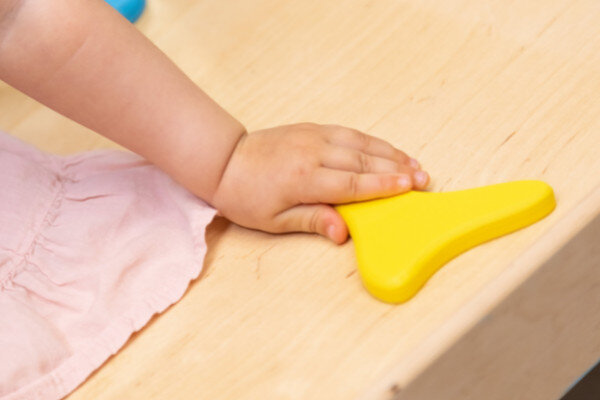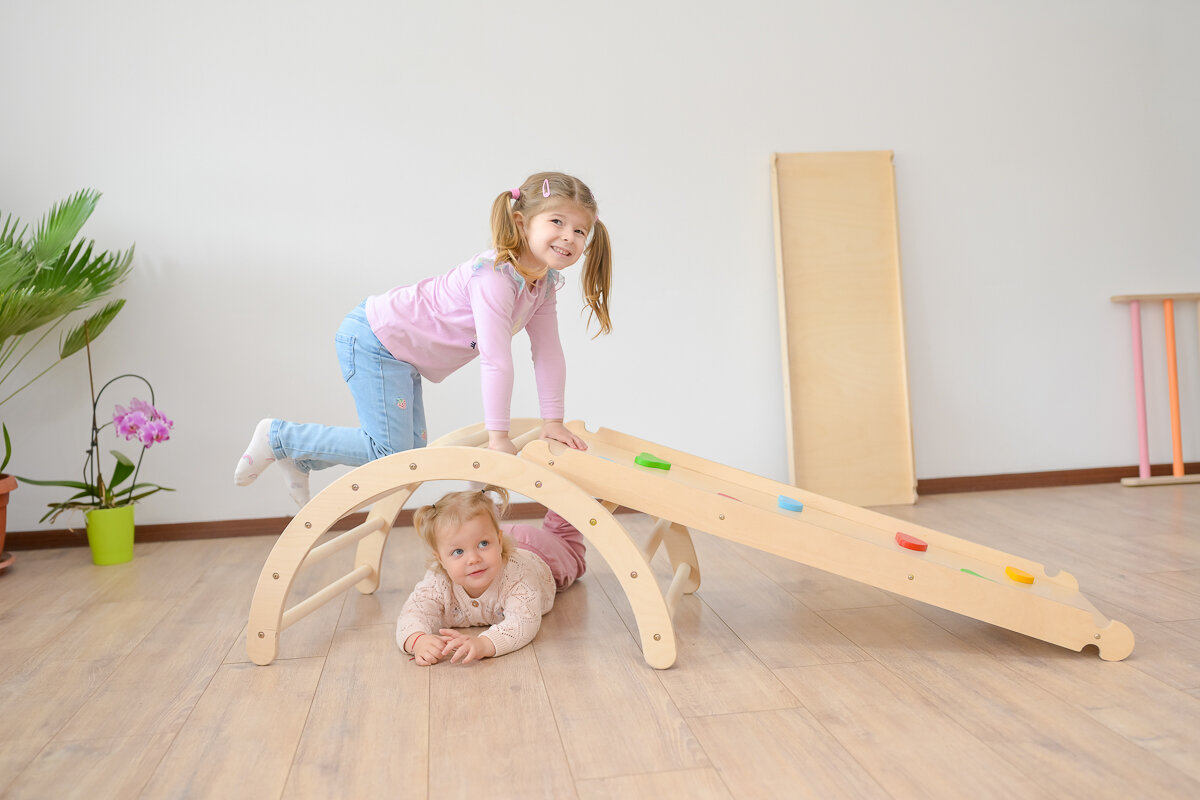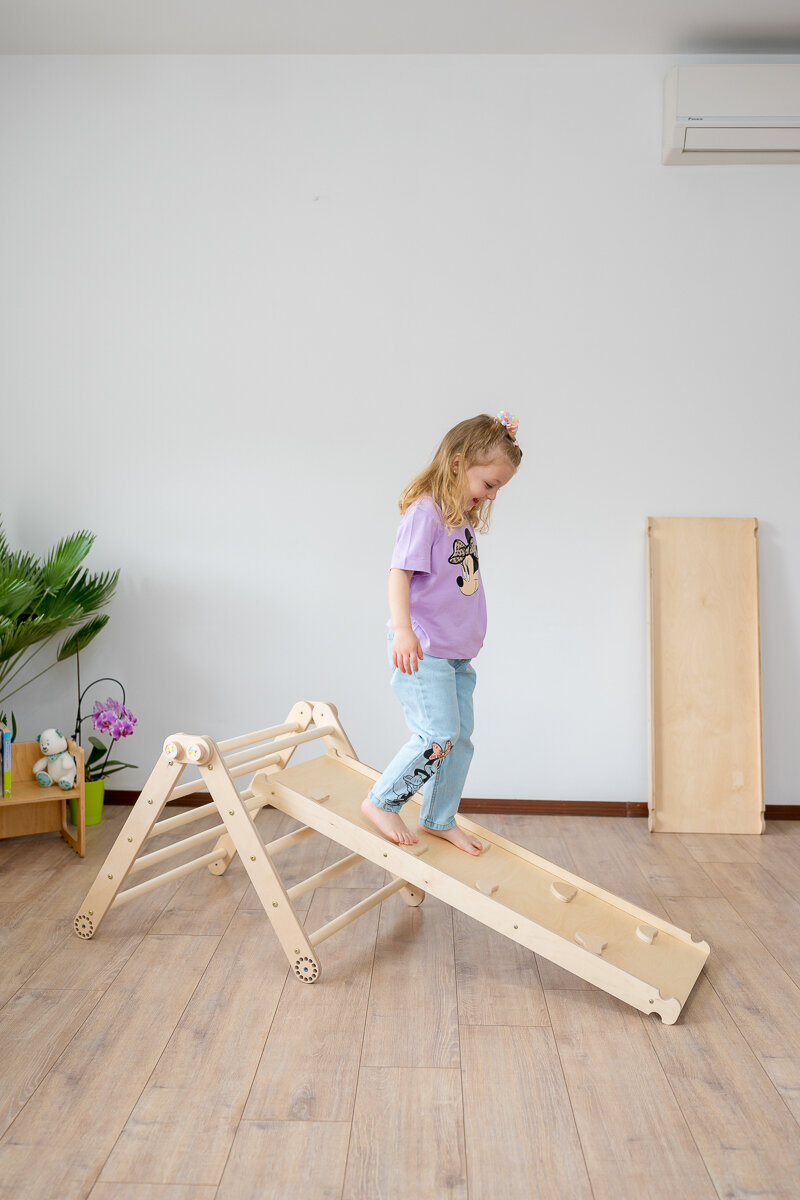What Is the Montessori Method and How to Apply It at Home?
The Montessori Method is an educational approach created in the early 20th century by the world-renowned Italian educator Dr Maria Montessori. At its heart lies the idea of spontaneous, natural learning from early childhood. The goal of the Montessori philosophy is to help children explore and understand the world independently through play. Montessori-inspired toys play a key role in this process, allowing little ones to have fun while facing new challenges. In the Montessori world, the child is the main driver of discovery—learning through curiosity, exploration, and all their senses.
Key Elements of the Montessori Philosophy
Natural Materials
In a true Montessori home, you will rarely find plastic. According to Dr Maria Montessori, children absorb knowledge primarily through their senses, which is why Montessori toys are made from natural, warm materials such as wood, cotton, and wool. These textures invite touch, encourage curiosity, and create a calm sensory environment for learning.

Minimalism
A cluttered room filled with too many toys can be overwhelming and distracting, not only for children but for adults as well. The Montessori philosophy teaches that fewer, well-chosen toys encourage focus, creativity, and meaningful play. A minimalist play space allows a child to engage deeply, make choices confidently, and develop concentration—one of the most valuable life skills.
In today’s world of abundance, it’s easy for children to lose focus among countless toys. Montessori encourages simplicity: a few quality wooden toys offer far greater value than dozens of noisy plastic ones.
Multifunctionality
Another distinctive aspect of the Montessori Method is versatility. There’s no “right” or “wrong” way to play. A single toy can become many things depending on the child’s imagination. For example, our Montessori Arch Rocker can transform from a swing into a bridge, boat, doll bed, or anything else a child imagines. Open-ended play helps children express creativity and gives parents a glimpse into their child’s unique inner world.
We create everything in the name of carefree, joyful play.

Freedom of Movement
Before Dr Montessori introduced her method, classrooms were filled with desks and chairs, keeping children seated for most of the day. She firmly believed that movement is vital for healthy child development. Every home and learning space, she argued, should give children freedom to move, climb, and explore.
“Since movement is the expression of the will, we must help the child in his efforts to act according to his will,” said Dr Montessori.

Developing gross motor skills is a central aspect of this philosophy. These large muscle movements—walking, climbing, balancing—build strength and coordination. Montessori climbing structures, such as our Adjustable Pikler Triangle, are perfect for encouraging safe physical activity at home. This sturdy wooden climber helps children learn to balance, build confidence, and strengthen muscles through play.
Learning Through Real-Life Activities
According to Dr Montessori, play and real-life experiences go hand in hand. Children learn best when they can mimic adults and take part in everyday tasks. Cooking, cleaning, and simple household chores teach responsibility and independence.
Invite your child to join you in the kitchen or during cleaning using a Montessori Learning Tower—a safe, sturdy platform that lets them reach the counter and participate actively in family life.
Follow the Child
One of the most important Montessori principles is to observe the child and follow their interests. Dr Montessori discovered that children learn faster and more effectively when they are genuinely curious and motivated. Pay attention to what excites your child—if they love climbing, offer them a climbing frame; if they enjoy building, provide blocks or natural materials. Let their curiosity guide you.
The Montessori Method has been a trusted approach for over 100 years, embraced by families and educators worldwide. It nurtures independence, creativity, and confidence—values that help children grow into happy, capable adults.
So how will you bring the Montessori Method into your home? Share your ideas and experiences in the comments below!








